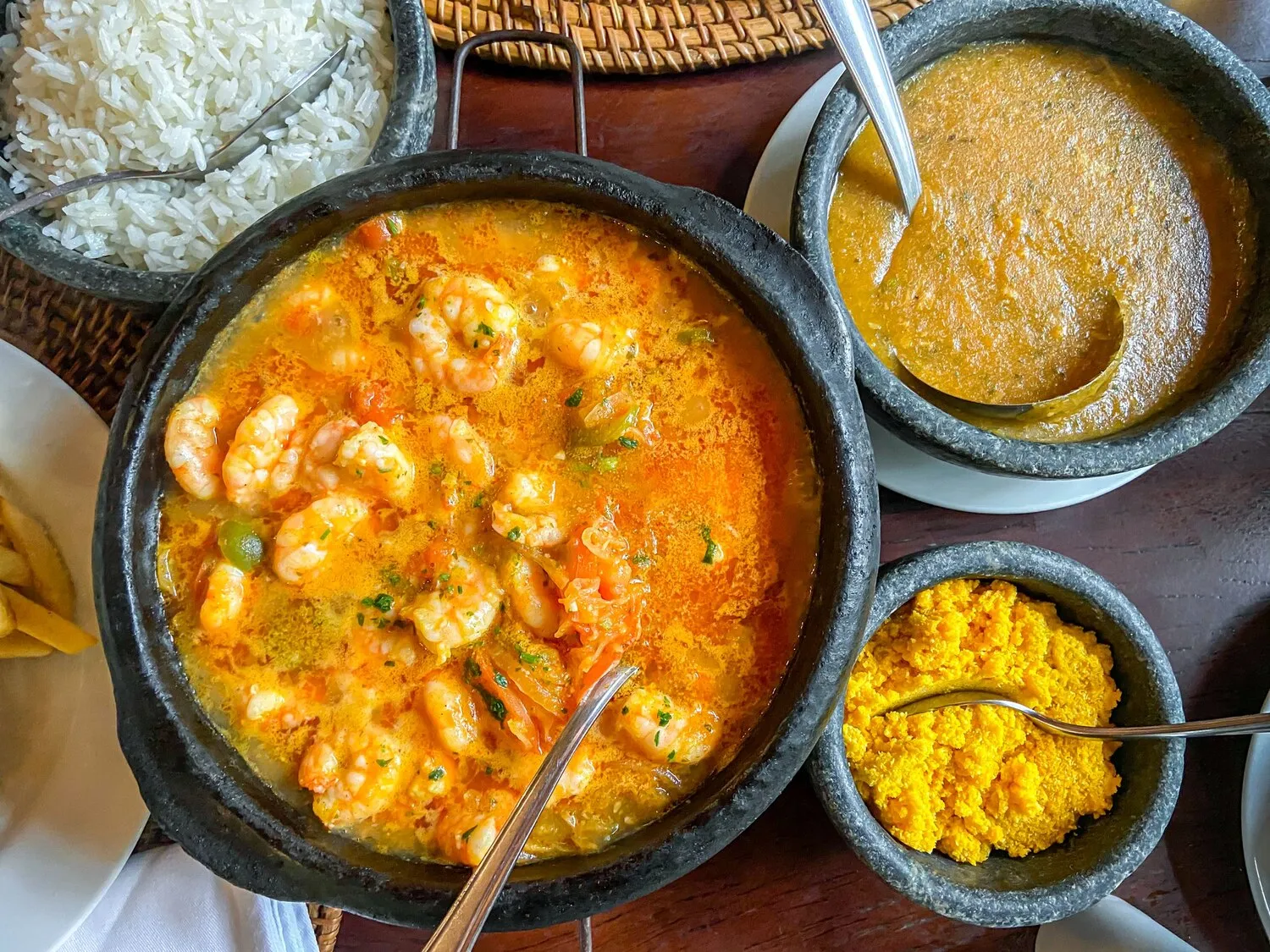
Moqueca de Peixe
Fish stew cooked in coconut milk, palm oil, tomatoes, onions, and cilantro. A traditional Bahian dish.
Nutrition Facts
* The % Daily Value (DV) tells you how much a nutrient in a serving of food contributes to a daily diet. 2,000 calories a day is used for general nutrition advice.
Moqueca's origins trace back to the indigenous peoples of Brazil, who cooked fish and seafood in earthenware pots. Over time, African influences, particularly coconut milk and palm oil (dendê oil), were incorporated, resulting in the distinct Bahian version we know today. European influences, notably tomatoes, onions, and bell peppers, further shaped the dish into its current form, representing a fusion of cultures.
Moqueca is more than just a dish; it's a symbol of Bahian culture, representing the region's rich history and diverse influences. It's often served at celebrations and family gatherings, representing hospitality and community.
Bahian Identity
Moqueca is deeply connected to the cultural identity of Bahia, a state known for its African heritage. It embodies the blending of indigenous, African, and European culinary traditions.
Social Gatherings
Traditionally, Moqueca is a dish prepared and shared among family and friends, fostering a sense of community and togetherness. The communal aspect of sharing a large pot of Moqueca is integral to its cultural significance.
Religious Significance
In some Afro-Brazilian religions, such as Candomblé, dendê oil and coconut milk, key ingredients in Moqueca, hold ritual significance and are used in offerings to deities.
Moqueca de Peixe is a rich and savory stew, characterized by the delicate sweetness of coconut milk, the fruity and slightly peppery notes of palm oil, the acidity of tomatoes, and the aromatic freshness of cilantro.
The base flavor profile is built upon the creamy coconut milk, which provides a gentle sweetness and velvety texture. Dendê oil, derived from the fruit of the African oil palm, imparts a distinct orange color, a slightly earthy flavor, and a subtly fruity note. Tomatoes and onions contribute acidity and sweetness, respectively, creating a balanced sauce. Cilantro adds a bright, herbaceous element. The fish itself absorbs these flavors, resulting in a tender and flavorful protein component. Lime juice, often added towards the end, brightens the overall flavor profile and adds a refreshing tang.
Freshness is Key
Use the freshest fish and seafood possible for the best flavor. Look for firm flesh and a clean, ocean-like smell.
Don't Overcook the Fish
Cook the fish gently and avoid overcooking it, as it can become dry and tough. It's best to add the fish towards the end of the cooking process and simmer until it's just cooked through.
Simmer, Don't Boil
Cook the stew over low heat, allowing the flavors to meld together gradually. Avoid boiling, which can toughen the fish and cause the sauce to separate.
Use Good Quality Dendê Oil
Dendê oil can vary in quality. Look for a product that is bright orange and has a pleasant, slightly fruity aroma. Avoid oils that smell rancid or have a dull color.
Explore additional Stew dishes and restaurants
Explore StewDiscover top dining spots and culinary experiences in Feira de Santana.
Explore Feira de SantanaLearn more about the food culture, restaurant scene, and culinary heritage of Brazil.
Explore Brazil